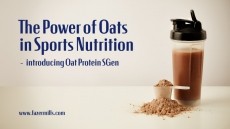How Atkins works - possible mechanism discovered
weight loss effect of high-protein diets like Atkins.
A team from the national research institute INSERM found that a high-protein diet triggers glucose production in the small intestine of rats. This induces feelings of satiety, making the animals less inclined to eat.
While the Atkins diet was controversial among nutritionists, a number of studies showed that it did indeed lead to weight loss. Researchers linked this effect to protein's impact on fullness, making dieters less likely to suffer from hunger pangs.
But the mechanism by which proteins suppress appetite has been unclear. Previous research has found that high dietary protein has little effect on the major hormones that regulate hunger.
The new study, published in Cell Metabolism (issue 2, vol 5, pp321-9), found that feeding rats a high protein diet significantly increased the activity of genes involved in glucose production in the animal's small intestine.
This led to increased protein production, which was sensed by the liver, and relayed to the brain, causing the animals to cut their food intake.
"Intestinal gluconeogenesis (ie de novo synthesis of glucose) is induced during the postabsorptive time (following food digestion) in rats specifically fed on protein-enriched diet," write the researchers.
This results in glucose release into portal blood, counterbalancing the lowering of glycaemia resulting from use of the intestinal glucose.
The researchers tested their theory by protein infusions into the portal vein of control rats (fed on starch-enriched diet). They observed decreased food consumption and activated hypothalamic nuclei regulating food intake.
"All these effects are absent after denervation of the portal vein," they said.
The researchers do not know how protein would trigger increased glucose production but it may trigger the release of cyclic AMP, a chemical that can stimulate the genes responsible for producing glucose.











